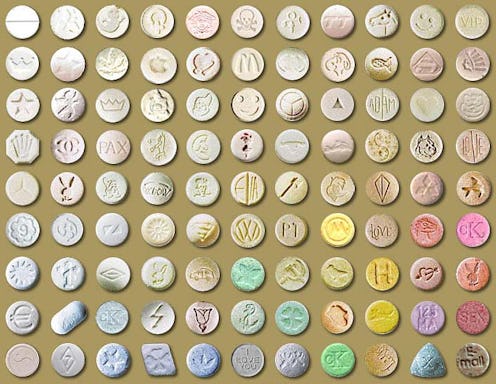Life
"Molly" Was Popular Long Before Miley

There's been a recent flurry of worry over kids these days and their "new" drug Molly. Does nobody remember the 1990s?
Back in the 80s and 90s, a little phenomenon called raves started gaining attention, and with them a little drug called MDMA. Most people referred to MDMA as "Ecstasy" or "E," and it was touted as a "club drug" that made kids want to have sex.
Parents were predictably freaked out. Talk shows and print media were predictably mesmerized (see here, here, here, here and here). The book Generation Ecstasy was published in 1999. In June 2000, Time's cover story featured a young girl in half black-and-white, half psychedelic colors behind the headline: "What Ecstasy Does to Your Brain."
Though the term "Ecstasy" seems to have fallen out of fashion, Ecstasy and Molly are essentially the same thing. Both are forms of MDMA, with Ecstasy generally referring to a more adulterated pill form of the drug and "Molly" referring to MDMA in purer, powder form. In many cases, though, the two names are used interchangeably.
I tried Molly once, the summer after I graduated from high school. This was in the year 2000. [Yes, I'm old.] It had hardly seemed like a big deal, because tons of people I knew—even the "good kids"—had already tried either Ecstasy or Molly.
The point is: Molly was big back then. I can't tell you whether it grew less popular and then came back, or just never went away, but regardless—teens and 20-somethings were doing Molly way before Miley.
If it sounds like I'm just quibbling ... well, kinda (get off my lawn!). But it's probably not in the best interest of anybody to treat Molly as some sort of new threat or trend. It seems unnecessarily alarming, since "new" drugs come with new risks. Yet the risks associated with MDMA have actually already been researched extensively.
A recent review of 25 years of MDMA research notes that "MDMA increases body temperature and thermal stress, with cortisol levels increased by 800% ... Recreational users show deficits in retrospective memory, prospective memory, higher cognition, problem solving, and social intelligence. Deficits also occur in sleep architecture, sleep apnea, complex vision, pain, neurohormones, and psychiatric status."
Clearly, Molly is far from harmless. Yet we know this, because Molly is nothing new. If it's having a resurgence, it makes sense to renew danger warnings. But the credibility of these warnings gets diminished when people ignore history just to drum up fear.
Besides: What better way to steer some current high-schooler away from MDMA than telling them it was really cool when their Gen X parents were their age?